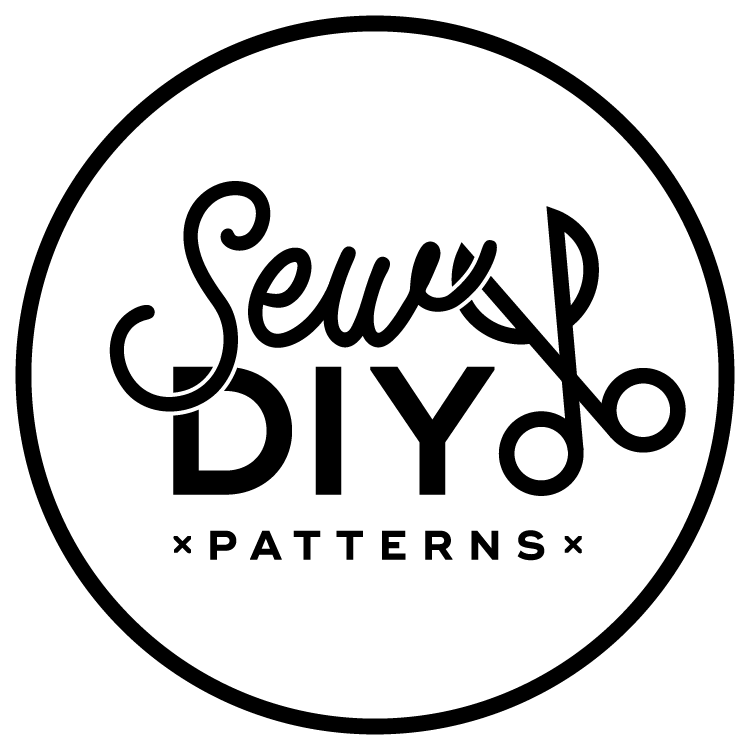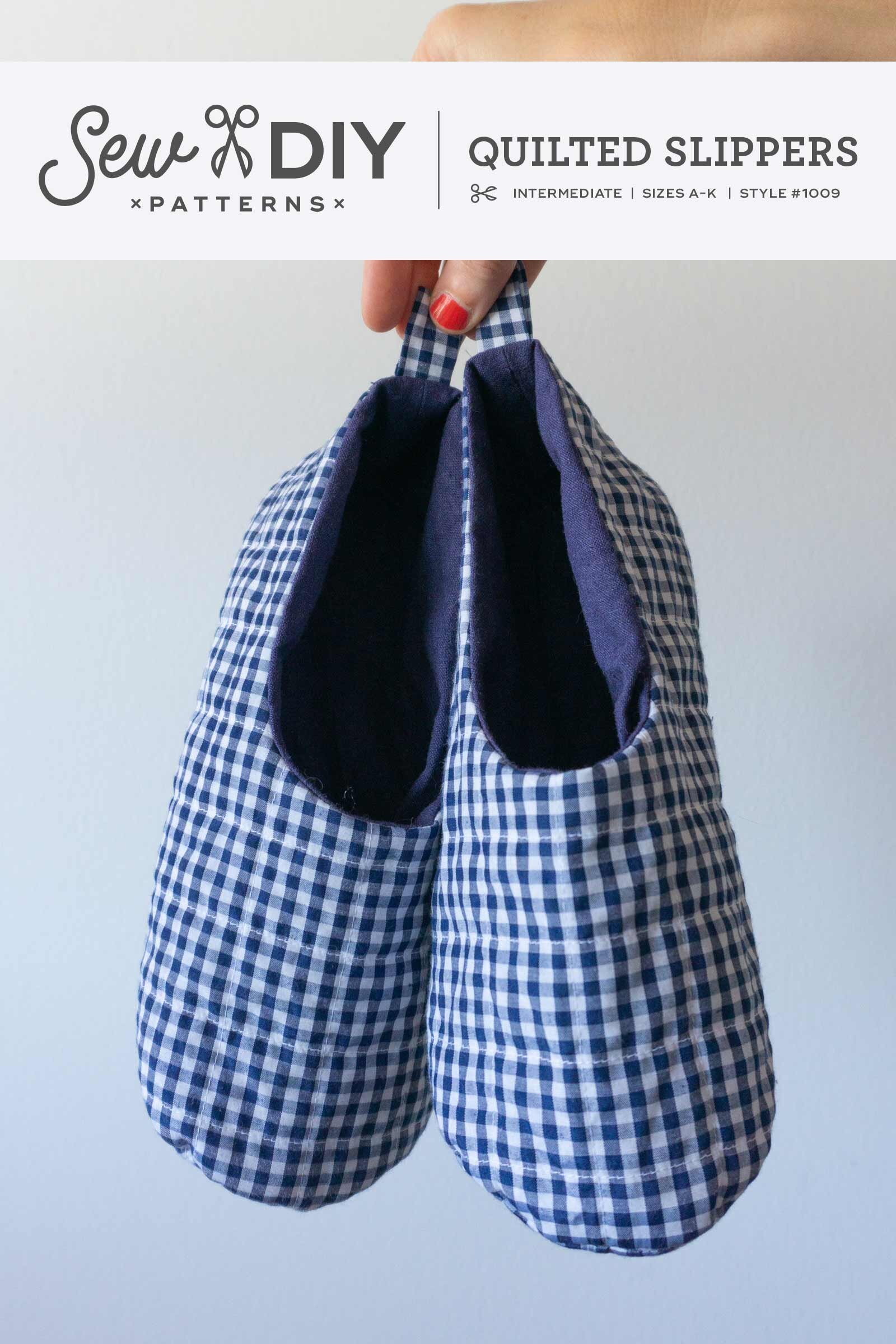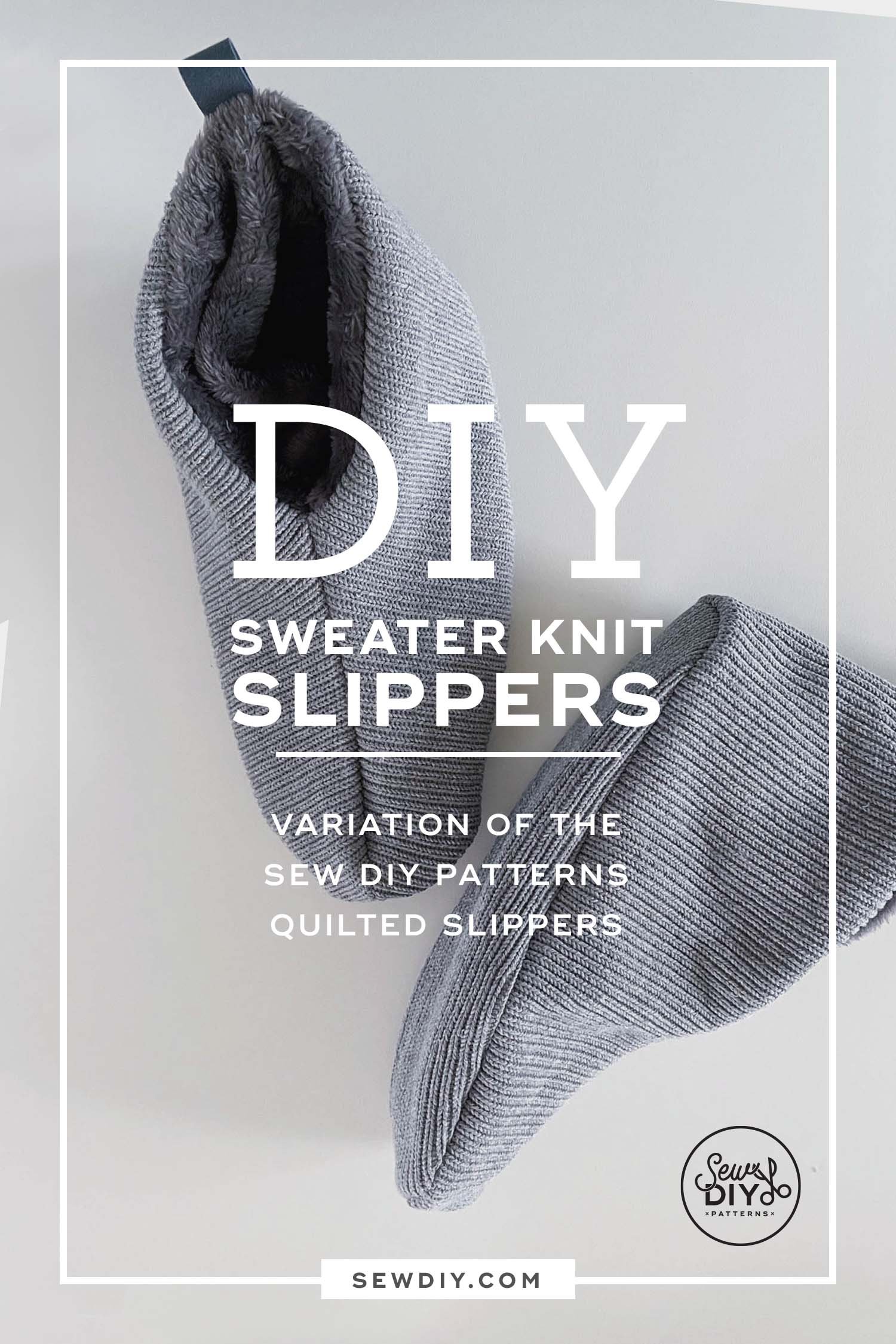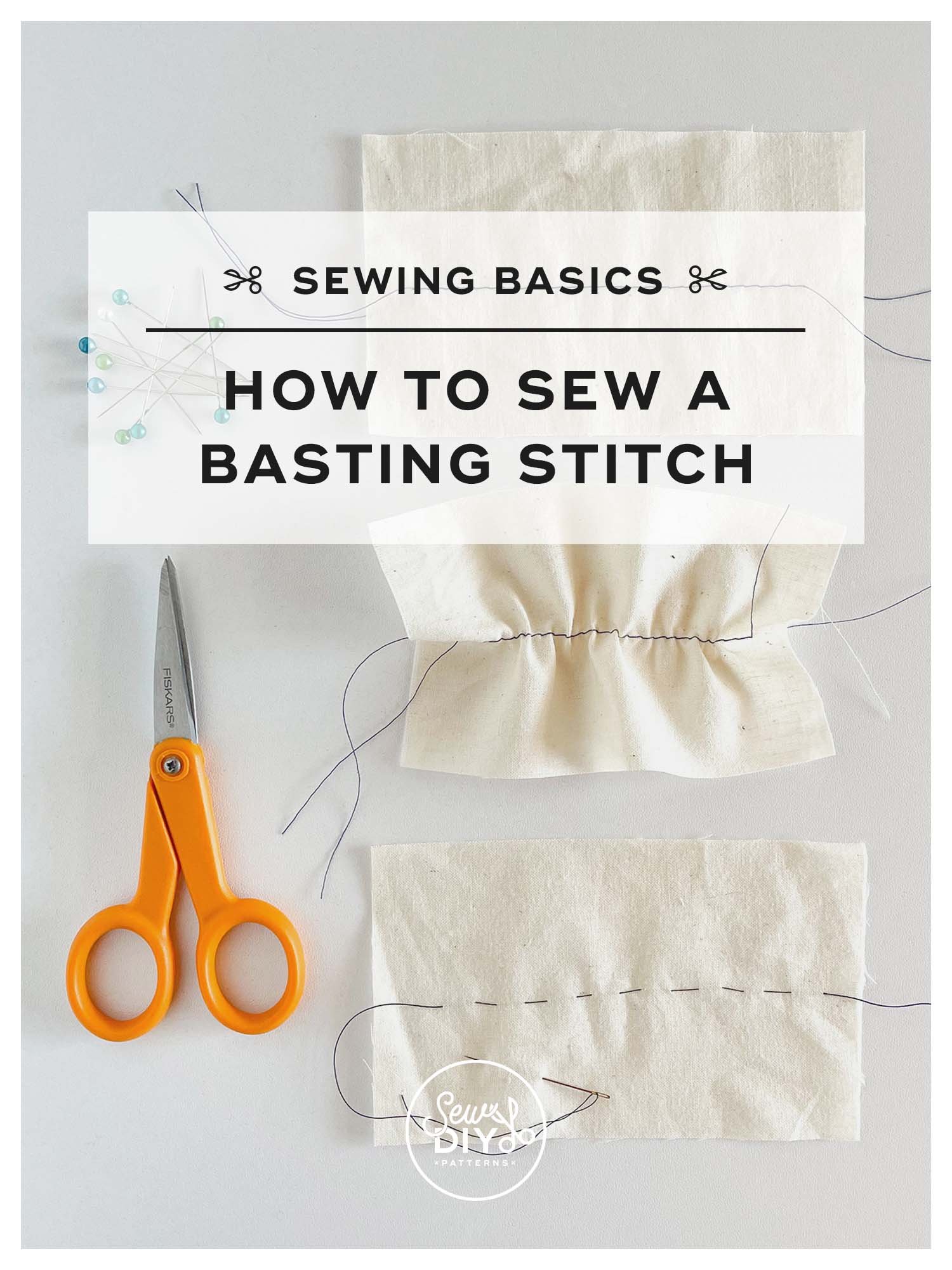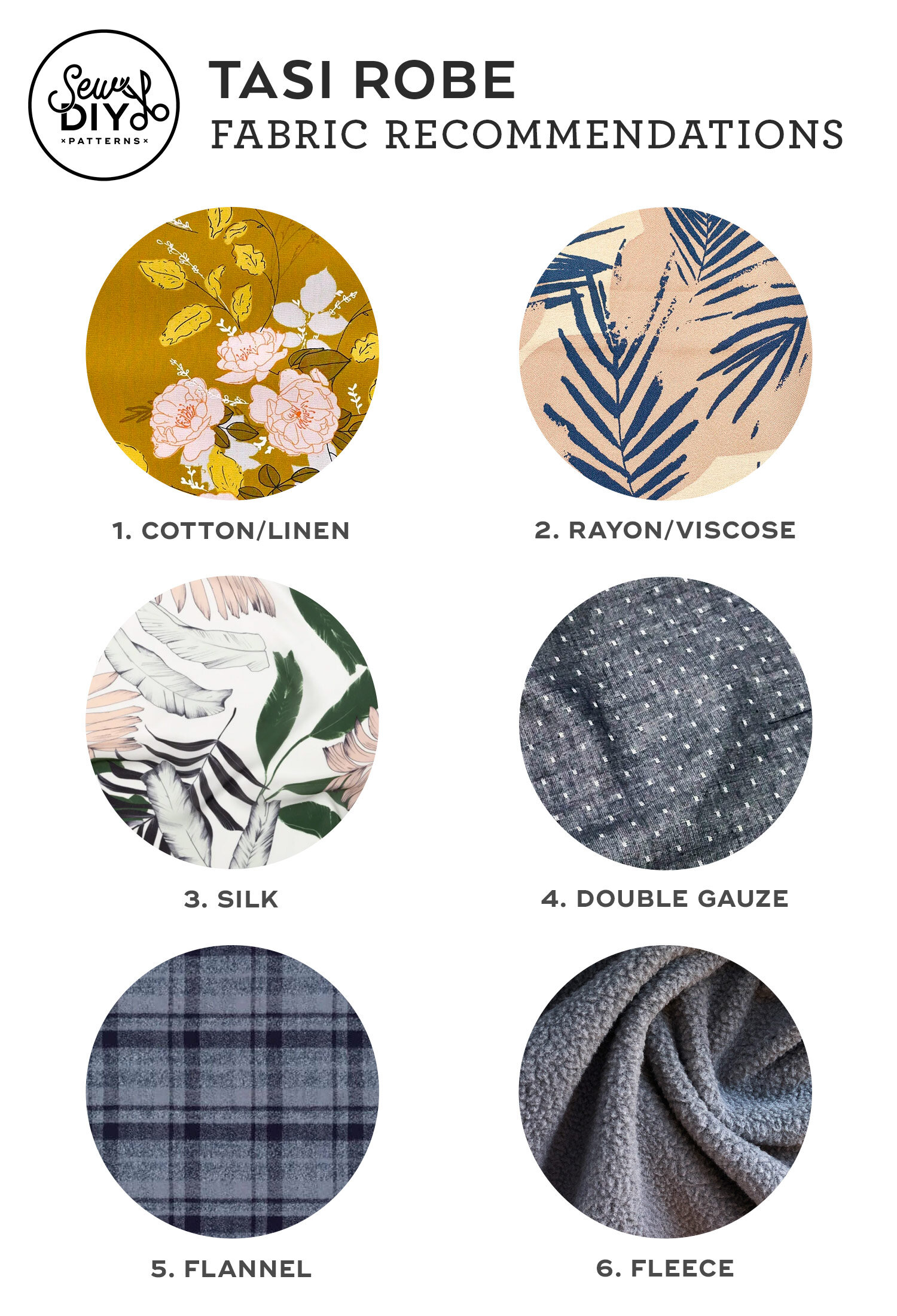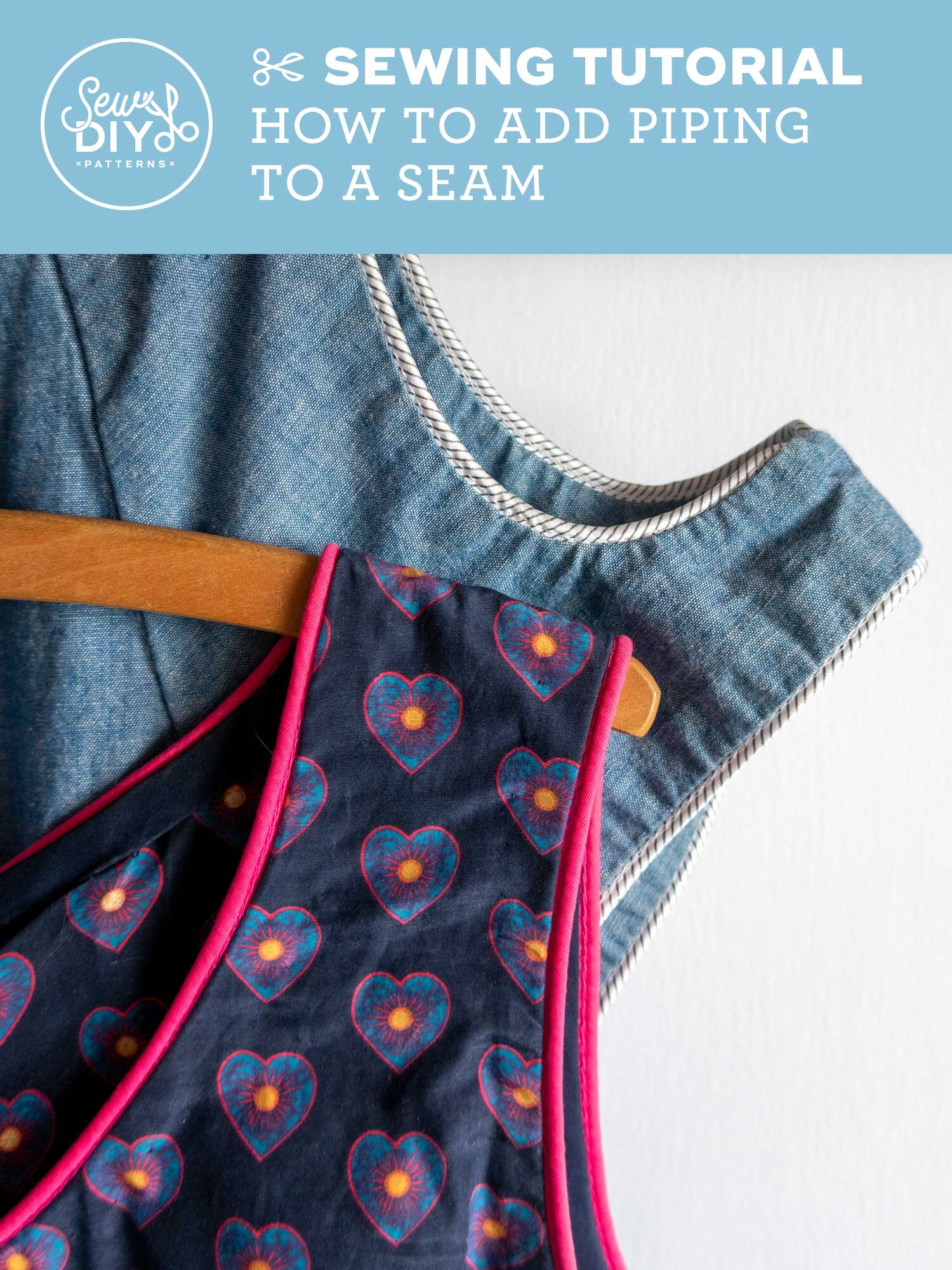In today’s video, I’ll be showing you how to sew a Hong Kong seam finish. The Hong Kong finish is a variation of a bias bound seam finish. This method works will with medium to heavy weight fabrics. This seam finish is similar to a bias bound seam except that the raw edge of the bias tape is not tucked in on the back side, creating a very flat finish. It’s a simple seam finish to sew and creates a really beautiful look on the inside of your garment. It’s also a great opportunity to use your most beautiful bias tape.
Fabric and supplies for the Quilted Slippers
Welcome to the first installment of the Quilted Slippers sewalong. Today, we’re going to be sharing recommendations for fabric and supplies. We’ll discuss kinds of fabric that you can use, types of batting and ways you can make the bottoms of your slippers non-slip.
FABRIC RECOMMENDATIONS
For the exterior fabric, we recommend medium-weight cotton, quilting cotton, linen, wool, flannel, or pre-quilted fabric. Leather or suede can also be used for the sole to prevent slipping (more on that below).
I’ve also had success using sweater knit fabric for the exterior fabric. It’s generally not recommended to quilt knit fabric but it worked fine in my tests. If you want to try knit fabric for your slippers, I recommend first testing how well it works to quilt the fabric.
For the lining fabric, we recommend medium-weight cotton, linen, flannel, or fleece.
Fabrics shown above:
2) Linen from Blackbird Fabrics
4) Flannel from Maker Mountain Fabrics
5) Pre-quilted fabric from Mood
BATTING
Note: If you use pre-quilted fabric, you won’t need batting.
Batting is available in a variety of fibers and thickness (called “loft”). A low loft batting will be thin and a high loft batting will be thicker. If you want a thicker slipper, you can use two layers of batting for the entire slipper or even just for the sole to provide a little extra cushioning. Remember, the thicker the batting is, the tighter the slipper will fit.
For fibers, you’ll most often find batting made from polyester or a blend of polyester and cotton. Batting is also commonly made from wool and bamboo. Any type will work for these slippers. You can purchase batting by the yard or in pre-packaged cuts.
A note on sizing and thick fabric: One word of caution on using thicker fabric and extra layers of batting: It will likely make the slippers fit more tightly, especially in the skimmer style (due to its low profile over the toe). If you are planning to use extra batting along with a thick or fluffy lining, you may want to size up.
How to make your slippers non-slip
One important consideration when making (and wearing) slippers is that the bottoms are not slippery. There are a few ways to do this. First, you can use a fabric for the soles that is non-slip such as leather or suede. There is also non-skid fabric that you can buy (think the stuff on the bottom of kids footsie pajamas). I’ve found it on Amazon and on Etsy.
Another option is to apply a substance to the sole of the slippers after they are sewn together. You might try puff paint. Or, there is a product called Sock Stop for just this purpose. I’ve found it on Amazon and on Etsy.
One final tip from one of my testers: “I used a foam insert - basically cut around the sole template without seam allowance and inserted it between the lining and outer. It makes them super comfortable. Carpet underlay is a good thing to use and most shops have offcuts they will give you for free.”
About the Quilted Slippers pattern:
The Sew DIY Quilted Slippers are the perfect way to keep toes warm and use up small cuts of fabric. Plus, it's a great way to introduce yourself to quilting and use up small cuts of fabric. The quilted exterior is constructed by quilting a layer of fabric and batting together. You can also use pre-quilted fabric for a quicker project.
The slippers are sized for foot lengths 8.25-12 inches (21-30.5 cm) which approximately fits US women’s shoe sizes 4-14 and US men’s shoe sizes 6-14.5, so you’ll be able to make these quilted slippers for everyone in your family.
View A is a bootie style slipper that can be worn with the top turned down to reveal the lining or with the top up to keep the ankles warm. View B is an open top skimmer style, perfect for the summer months.
UPDATE 2021: If you’re looking for more quilting projects, or ways to use your fabric scraps, check out my e-course Improvisational Quilting for Garment Sewists is now live and available for purchase in the shop. This is a self paced and comprehensive course that teaches you everything you need to know to learn how to turn your fabric scraps into useful and unique improvisational quilts. You can learn more about it here.
Fabric and supplies for the Tasi Robe and Jacket
Welcome to the second installment of the Tasi Robe and Jacket sewalong. Today, I’m sharing some suggestions and recommendations for fabrics to use with this pattern. One of the great things about this pattern is that you can use a wide variety of fabrics. The pattern also lends itself to piecing leftover fabrics for a color blocked look. The robe shown on the right above, is made from scrap fabric and constructed with French seams. Later this week, I’ll be talking more about special seam finishes for the Tasi. But first, let’s talk about fabric.
CHECK OUT THE TASI ROBE PATTERN IN THE SHOP
To make the Tasi Robe you can really use any fabric that you’ve seen used for a robe. For a lighter robe, you can use cotton, linen, rayon, silk or double gauze. This robe is especially luxurious (and perfect for lounging at home) when made in silk or rayon crepe. For winter, you can make a warm and cozy robe, using heavier, soft fabrics such as flannel, fleece or terry cloth. Terry cloth would also work as a short robe to wear poolside (I just might have one of these planned! :).
You can also use knit fabric such as sweater knit or a medium-weight knit jersey to make the robe. The light pink robe shown in the photo at the top of the post is made from a medium-weight rib knit fabric. See below for a little more info on using a knit fabric.
Fabrics shown above, recommended for the robe:
1) Cotton mustard floral from StyleMaker Fabrics
2) Rayon crepe from StyleMaker Fabrics
3) Silk Georgette from Mood Fabrics
4) Cotton Double Gauze from Sewing Studio
5) Cotton Flannel from Maker Mountain Fabrics
6) Sherpa Fleece from Stonemountain and Daughter Fabrics
There are currently a few rayon fabrics in the Sew DIY shop that would work well for the Tasi robe. We are currently shipping within about 24 hours on weekdays. At this time we’re only shipping to the US. See below for our picks.
For the jacket, I recommend medium to heavy weight linen, cotton or even a lightweight denim or canvas. If you want to use knit fabric or something that’s lighter in weight, I recommend making the in-hem pockets narrower, to prevent sagging. Alternately, you can use a line of vertical topstitching to divide the pocket in half and prevent it from drooping.
Fabrics shown above, recommended for the jacket:
1) Cotton Ikat from Sewing Studio
2) Mid-weight linen from Blackbird Fabrics
3) Non-stretch denim from Blackbird Fabrics
4) Boiled wool coating from StyleMaker Fabrics
5) Canvas from StyleMaker Fabrics
6) Linen/Rayon blend from Sewing Studio
USING KNIT FABRIC
This pattern also works well for knit fabric and can easily be adapted to a cardigan style garment. The instructions are mostly for woven fabric but they do provide a few tips for constructing the garment using knit fabric. If you have a serger, you can use it for most of the seams, making for a very quick sewing project. Next week, I’ll be doing a video sewalong showing how to use the pattern with a sweater knit fabric. You’ll be able to find that post on the main sewalong page. (Again, if you are sewing the jacket style, I recommend making the in-hem pockets narrower to prevent sagging.)
OTHER SUPPLIES AND TOOLS
For this pattern, the only notions needed are matching thread, hand sewing needles and machine needles. You may also want a small piece of ribbon to make a hanging loop for the robe. Alternately, you can make a loop using a strip of fabric.
For drafting your pattern, it’s helpful to have a few tools. You will need a flexible measuring tape to measure the body of the person you’re sewing for. Plus, it’s helpful to have some large rulers to draw out the pattern pieces. I tend to use a combination of the grid on my cutting mat and a quilting ruler.
In general, I encourage you to use what you have on hand. You can use any kind of paper that you have handy. Tracing paper is nice because you’ll be able to see through it but it’s not necessary. You can use butcher paper, old paper shopping bags or even wrapping paper (sometimes it has a helpful grid printed on the reverse side). If you want to invest in pattern paper, you might try a roll of paper that has a pre-printed grid. I usually buy a roll of tracing paper and it will for a few years. See below for links to some of my favorite drafting tools.
More about the Tasi Draft-it-Yourself Robe and Jacket:
This draft-it-yourself pattern will walk you through each step of designing and drafting your own custom fit pattern. You choose the proportions you’d like and we give you the formulas to draft all the pattern pieces. Because you’re starting from scratch, you can make this garment in any size you like for any human body. If you’re not up for doing the calculations yourself, or just want to double check the math, we’ve created a spreadsheet calculator that does the work for you.
View A is a classic robe with patch pockets, a tie belt and carriers. View B is a casual jacket with turned back cuffs, oversized pockets and a hem band. It’s easy to adjust the design of this pattern to suit your personal preferences and we even give you a few ideas for ways you can customize and adapt this pattern.
For more help sewing the Tasi, check out the links below, or click here to go to the main Sewalong page. Some of the posts linked are from older sewalongs that use the same or similar techniques to this pattern. If you haven’t purchased the pattern yet, you can get your own copy in the shop. Happy sewing!
